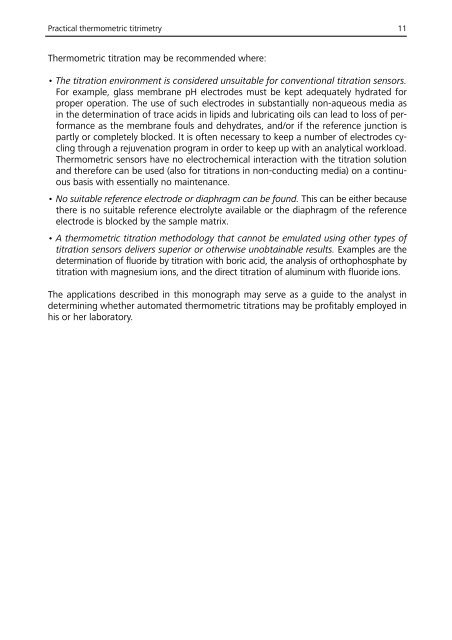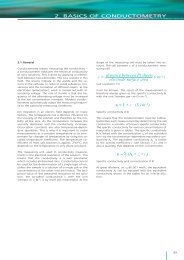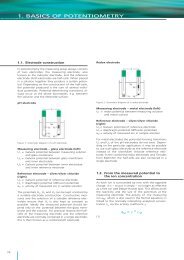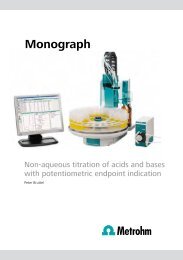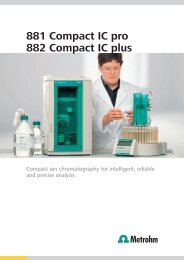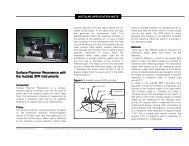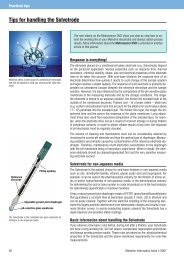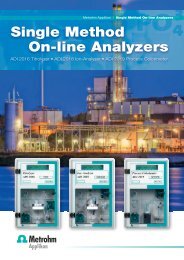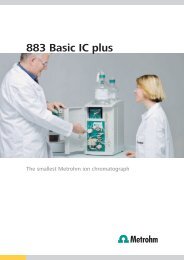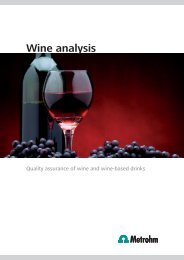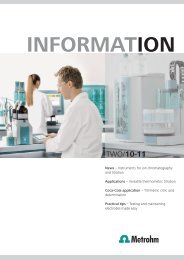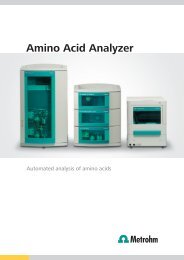Monograph - Metrohm
Monograph - Metrohm
Monograph - Metrohm
You also want an ePaper? Increase the reach of your titles
YUMPU automatically turns print PDFs into web optimized ePapers that Google loves.
Practical thermometric titrimetry 11<br />
Thermometric titration may be recommended where:<br />
• The titration environment is considered unsuitable for conventional titration sensors.<br />
For example, glass membrane pH electrodes must be kept adequately hydrated for<br />
proper operation. The use of such electrodes in substantially non-aqueous media as<br />
in the determination of trace acids in lipids and lubricating oils can lead to loss of performance<br />
as the membrane fouls and dehydrates, and/or if the reference junction is<br />
partly or completely blocked. It is often necessary to keep a number of electrodes cycling<br />
through a rejuvenation program in order to keep up with an analytical workload.<br />
Thermometric sensors have no electrochemical interaction with the titration solution<br />
and therefore can be used (also for titrations in non-conducting media) on a continuous<br />
basis with essentially no maintenance.<br />
• No suitable reference electrode or diaphragm can be found. This can be either because<br />
there is no suitable reference electrolyte available or the diaphragm of the reference<br />
electrode is blocked by the sample matrix.<br />
• A thermometric titration methodology that cannot be emulated using other types of<br />
titration sensors delivers superior or otherwise unobtainable results. Examples are the<br />
determination of fluoride by titration with boric acid, the analysis of orthophosphate by<br />
titration with magnesium ions, and the direct titration of aluminum with fluoride ions.<br />
The applications described in this monograph may serve as a guide to the analyst in<br />
determining whether automated thermometric titrations may be profitably employed in<br />
his or her laboratory.


